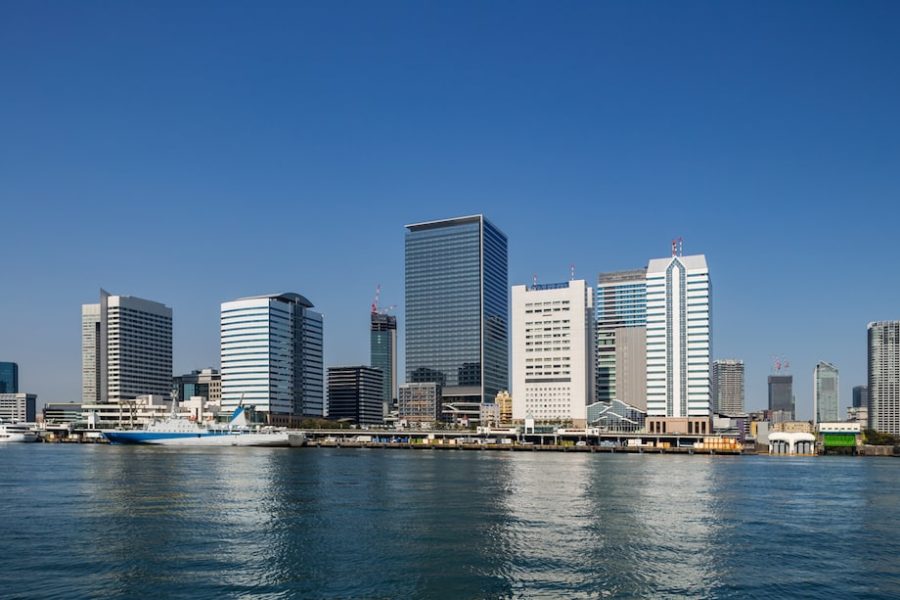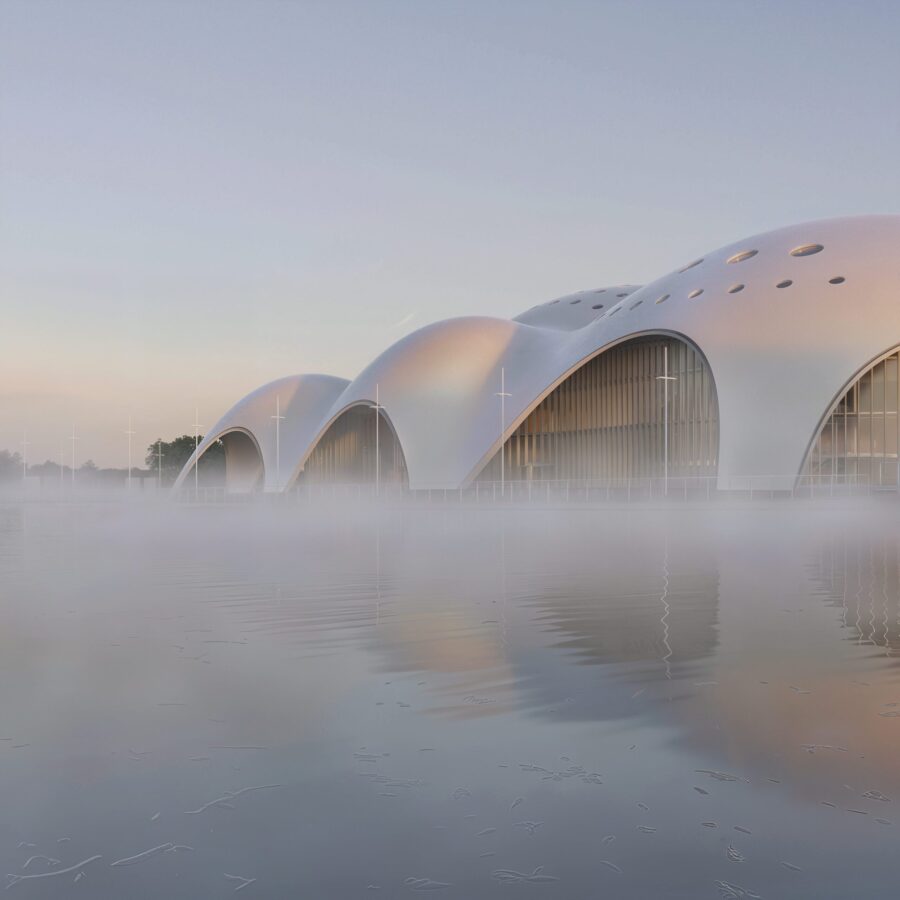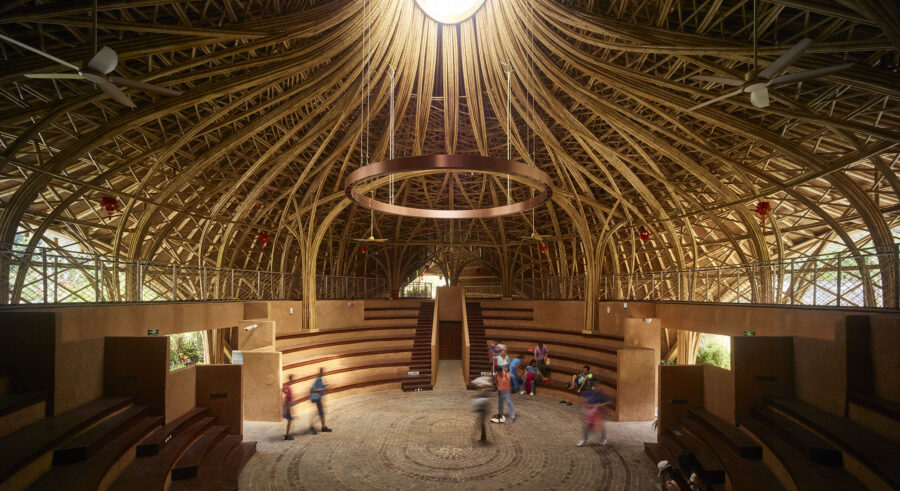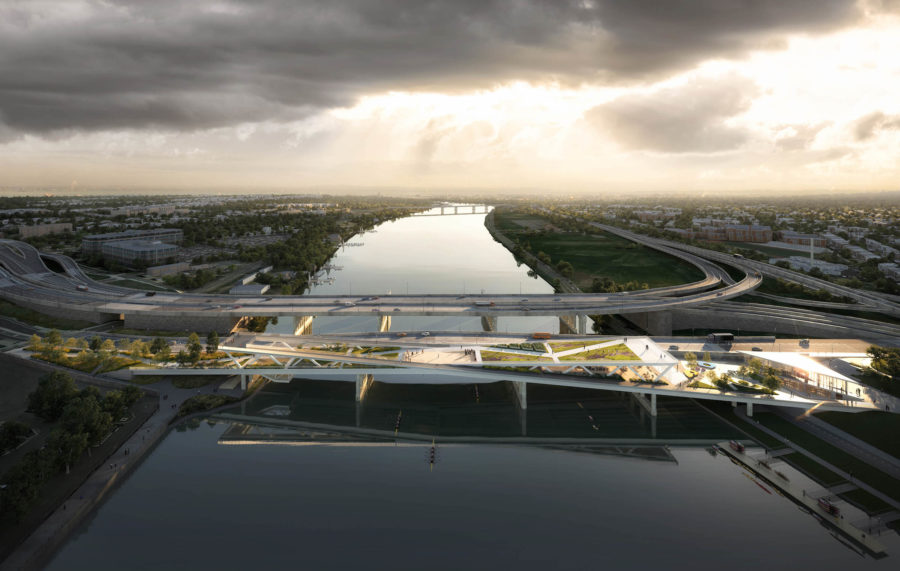
CULTURE


© Diego De Pol & Niklas Bernstein
モルディブの水上に建つリゾート施設〈クダドゥ・モルディブ・プライベート・アイランド(Kudadoo Maldives Private Island)〉は、ニューヨーク在住の日本人建築家Yuji Yamazaki氏が率いるYYA(Yuji Yamazaki Architecture)が設計した、自然の中の心地よさをつくり出すサステナブルな建築です。
(以下、YYAから提供されたテキストの抄訳)

© Diego De Pol & Niklas Bernstein
世界一海抜が低い国「モルディブ」
モルディブは世界的に有名な美しいビーチをいくつも有する国である。これはモルディブが、最も低い平均海抜の国であることに由来し、そのためモルディブの人々は海面上昇に非常に敏感である。
それゆえに、この小さな島国におけるカーボンニュートラルの達成は、大国での持続可能な開発への刺激となるはずである。サステナブル・ツーリズムの未来を語る場として、これほどふさわしい場所はないであろう。

© Diego De Pol & Niklas Bernstein

© Diego De Pol & Niklas Bernstein
空と海からアクセスするモルディブのリゾート施設
モルディブのすべてのリゾートは船か水上飛行機でアクセスする。空から目的地を発見するのはこの島国ならではの体験であり、ゲストはまずその建築物の全体像に圧倒されるのである。

© Diego De Pol & Niklas Bernstein

© Diego De Pol & Niklas Bernstein
モルディブでは従来、太陽光パネルは目立たない場所に隠されるが、〈クダドゥ・モルディブ・プライベート・アイランド〉では太陽光パネルの屋根がはっきりと見え、この場所のアイコンとなっている。
空から建築を見ることで、ソーラーシステムをコンセプトとして取り入れたデザインは、ゲストに真っ先に届くものである。

© Diego De Pol & Niklas Bernstein

© Diego De Pol & Niklas Bernstein
太陽光発電×リゾート建築
太陽光発電のコンセプトは、生産性だけでなく、情報性と説得力を持っていなければならないと考える。
まずゲストは上空からソーラールーフの大きさを知り、それがリゾート自体のスケールとどう関係しているのかを考える。

© Diego De Pol & Niklas Bernstein

© Diego De Pol & Niklas Bernstein
さらに近づくと、パネルが発電量を最大化する角度に配されていることや、パネルとパネルの隙間から太陽光を取り込むことで、日中の人工照明を最小限に抑えるなど、電力消費を抑える工夫が施されていることがわかる。
発電量は320kWpと、島全体をディーゼル燃料なしで稼働させるのに十分な電力量となっている。ディーゼル燃料の輸入が不要となったことで、太陽光発電システムの初期費用を5年で回収できる見込みである。これは気候の似た他の国々にとって素晴らしい先行事例となることであろう。

© Diego De Pol & Niklas Bernstein

© Diego De Pol & Niklas Bernstein

© Diego De Pol & Niklas Bernstein

© Diego De Pol & Niklas Bernstein
リゾートに求める自然の心地よさ
建築的には、風、日陰、眺望が南国における設計の原動力となった。
ヴィラやパブリックスペースには自然換気を促すため、対向する壁に窓を配置している。また、張り出した屋根やキャノピーなどを設置することで、各プライベートデッキの面積の半分以上が、日中5時間以上の日陰をつくるよう設計した。

© Diego De Pol & Niklas Bernstein

© Diego De Pol & Niklas Bernstein
ヴィラ間に配されたプライバシースクリーン「エッグクレート」は、隣接するヴィラからの視線を遮りながら、より広いオーシャンビューを提供する。
ゲストが南国での滞在に求める「風、日陰、眺望がつくり出す自然の中の心地よさ」をつくり出すデザインとなっている。

© Diego De Pol & Niklas Bernstein

© Diego De Pol & Niklas Bernstein

© Diego De Pol & Niklas Bernstein

© Diego De Pol & Niklas Bernstein
既存環境を守るデザイン
周辺環境のデザインは、島にもともとあった、美しいビーチや沿岸部の植物、ココナッツの木々、内陸部の森林などからインスピレーションを得ている。

© Diego De Pol & Niklas Bernstein
アオサ、アイアンウッド、ヤシの木、ハイビスカス、スクリューパインといった自生植物はそのまま活かし、宿泊施設はすべて砂地や浅瀬に設置することで、植物を保護するように努めている。
この地域には、既存の島々と紐づいたエコシステムが確立されているため、計画によりその生態系に与える変化を最小限に抑えることも重要な使命の1つであった。

© Diego De Pol & Niklas Bernstein

Site Plan

Main Complex 1F Plan

Main Complex 2F Plan

Main Complex Elevation

Over-Water Villas Plan

Over-Water Villas Elevation
以下、YYAのリリース(英文)です。
Main Information
Project Name: Kudadoo Maldives Private Island
Office Name: Yuji Yamazaki Architecture
Social Media Accounts:
Instagram: https://www.instagram.com/yuji_yamazaki_nyc/?hl=en
Facebook: https://www.facebook.com/pages/category/Local-business/YYA-Yuji-Yamazaki-Architecture-211394042318086/
Linkedin: https://www.linkedin.com/company/yya-yuji-yamazaki-architecture
Firm Location: 27 West 20th Street Suite 1201, New York, NY 10011Completion Year: 2018
Gross Built Area (m²/ ft²): ~6,500 m²
Project Location: Lhaviani Atoll, Maldives
Program / Use / Building Function: Hospitality Resort + Spa, Mosque on siteLead Architects: Yuji Yamazaki
Photographer
Photo Credits: Diego De Pol & Niklas Bernstein
Photographer’s Website: https://www.niklasbernstein.com/ & http://www.diegodepol.com/Project Description
The Maldives has the lowest average ground level of any nation, which makes for some of the world’s most beautiful beaches. It also makes Maldivians extremely sensitive to the change in sea levels. The burden of global CO2 reduction in the atmosphere lies primarily with a few large economies, but achieving carbon neutrality in this small island nation should be an inspiration for sustainable development in larger countries. There may be no better place in the world to showcase the future of sustainable tourism.
It is unique to this island nation that you first discover your destination from the sky, which gives the visitors a stunning impression of the entirety of the architecture on the island. Traditionally, solar panels are hidden in discrete areas in the Maldives and it does not have any other function, but in Kudadoo, photo-voltaic roof is decidedly visible and becomes the icon of the place. Visitors may instantly understand our aim to integrate the solar system into the overall design concept.
Solar concept should be as informative and persuasive as it is productive. At a glance, visitors can assess the size of the solar roof, and then comprehend the relationship to the scale of the resort served by it. As you get closer, the design of the building reveals geometry that not only maximize production of electricity by its angle, but also minimize consumption of electricity by allowing sunlight to come through the gaps between panels, minimizing the use of artificial light during the day. The system is producing 320kWp of electricity, which suffice to operate the entire island without diesel fuel. The initial investment in the solar system to be recovered in 5 years by eliminating the need to import diesel fuel. This should be a fantastic example for other countries with similar climates.
Architecturally, breeze, shade and view were the driving elements for our design in a tropical setting. Typical villa or public spaces have operable full height windows strategically placed in opposite walls, advocating natural air ventilation with Maldivian wind. With overhang roofs, umbrellas and canopies, more than 50% of private outdoor decks of all water villas were designed to have at least 5 hours of shaded hours during the day. Our “egg crate” privacy screen system between villas gives guests wider frontal ocean view, while blocking views from adjacent villas. Breeze, shade and view create comfort in nature. That’s what most of the guests seek in a tropical setting.
The design of the surroundings takes inspiration from what was there before. The island had beautiful beaches, littoral plantings, coconut groves and interior forests. The basic plant structure, and the native plant palette were kept intact such as Sea Lettuce, Iron Wood, Coconut Palm, Beach Hibiscus and Screwpine. All guest accommodations are placed on the sand lagoon in effort to preserve the vegetation. There is an ecosystem in place attached to existing islands in the region and it was part of our crucial mission to minimize the change.
「Kudadoo Maldives Private Island」Yuji Yamazaki Architecture 公式サイト
https://www.yyany.com/kudadhoo.html









